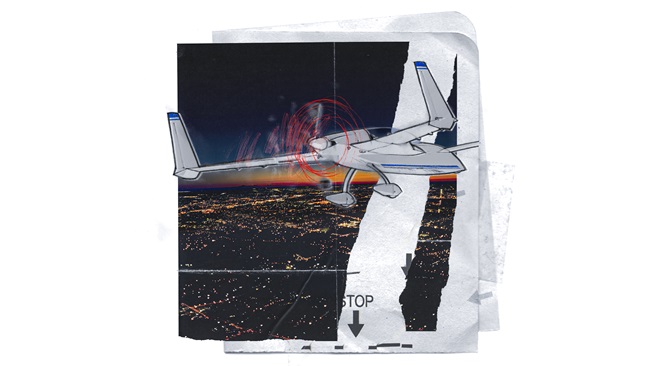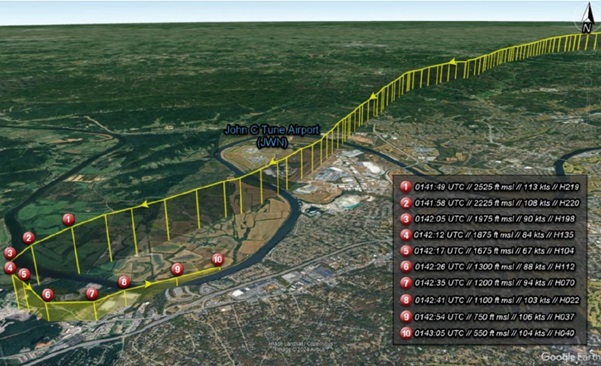Few preliminary clues in fatal Lake Placid accident
AOPA's McSpadden died; NTSB investigation continues
A preliminary report from the NTSB notes that the Cessna 177RG flown by former NFL champion Russ Francis, with Richard McSpadden, the longtime leader of the AOPA Air Safety Institute, in the right seat, struck an embankment near the runway that the Cardinal was attempting to return to following a reported malfunction. Francis and McSpadden both died in the October 1 accident.
Witnesses told investigators that the Cardinal, which was planned to be the subject aircraft during an air-to-air formation photography flight with a Beechcraft Bonanza, took off about 700 feet behind the Bonanza. A witness told investigators that the Cardinal's engine sounded abnormal, as if the propeller was pitched for climb rather than takeoff, “then he heard the engine surge. During the initial climb, the witness further described that the engine did not sound as if it was running at full power.”
The Cardinal attempted to return to Runway 14 with a tailwind. (A weather observation from an automated station 13 miles away indicated 7 knots of wind from the north and clear skies.) The Cardinal hit an embankment on airport property, about 15 feet below the crest, 440 feet short of the runway, and about 250 feet left of the runway centerline, the NTSB report states.
The preliminary report notes the engine had 36.7 hours since a major overhaul, and notes no significant findings related to the fuel system, ignition system, or oil. The landing gear was found partially extended, with the main wheels bent into the fuselage by impact forces. Impact damage made it unclear what position the landing gear selector was in, the report notes.
The report details examination of various aircraft systems and notes no findings of obvious significance to the apparent loss of engine power during flight.
The NTSB retained the wreckage for further examination.
The NTSB investigation is likely to require many months to complete. The Air Safety Institute is meanwhile gathering information and assessing whether an Early Analysis (a product that McSpadden pioneered) could provide insight that enhances safety.




